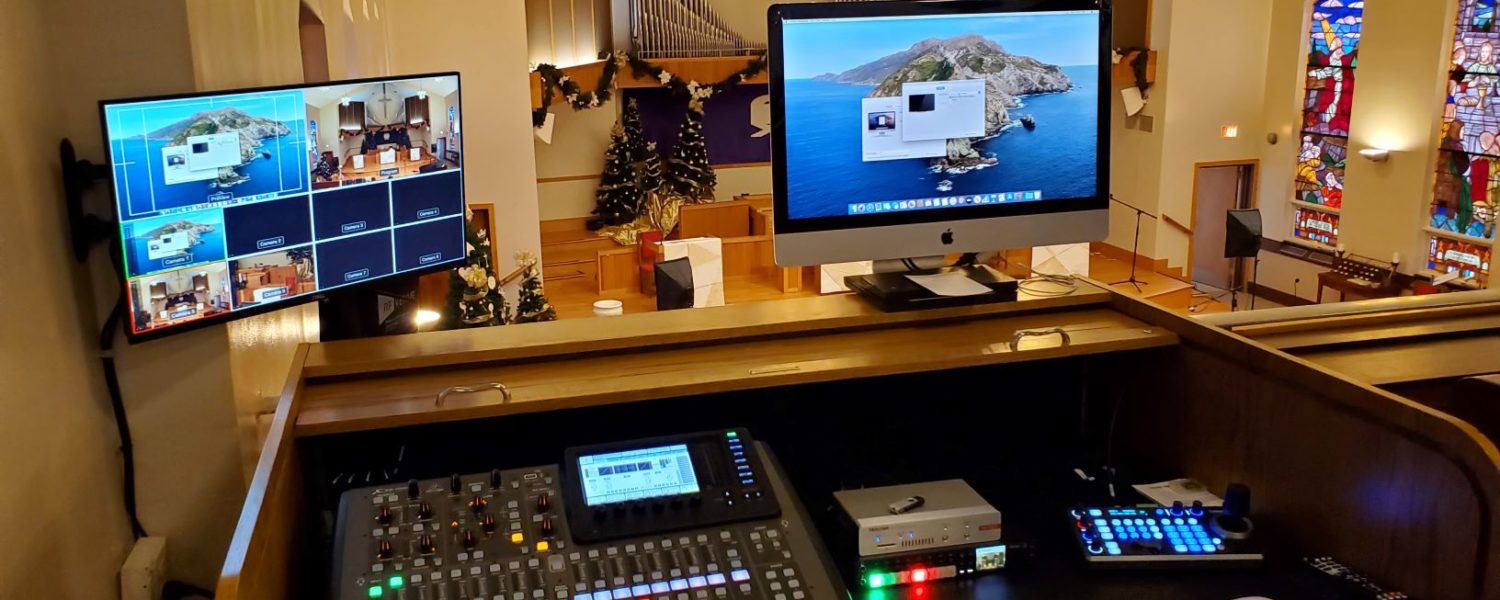By John W. Pierce
As we all know now, COVID has changed the way that ministries operate, period. It has single-handedly changed the way we worship and engage in relationships and how build our community of believers. As you can imagine, the overnight shift in how we gather and communicate to our congregations has been daunting for many ministries.
For over 25 years, I have spent countless hours tuning sound systems, programming lights, dialing in cameras for video production teams, and creating seamless transitions for people and technology to work in cohesion. Due to COVID, it has forced me to re-think how I approach creating systems and designs for congregations of all sizes, and I’d like to share a few simple points that could help you in your journey, as they have helped me over the last year.
- Keep it simple.
While it seems ridiculous, some of the best online services that I have seen lately or have had the privilege to help design are the most simplistic. If you are not in a place to hire professional camera operators or sound engineers, focus on making your online services simple. Simple songs, simple transitions, and keep your focus on making things as minimal as possible.
Mistakes are much less forgiving when experienced in person, but mistakes through the lens of a camera are much more noticeable. If resources are an issue for your congregation, try making things as easy for everyone in your congregation and for your volunteer teams.
Remember, the people who are your key volunteers or team leaders are trying to keep their own heads above water through this difficult time. Making it overly complicated for them may add stress and difficulty that can come through via mistakes or missing important details for your worship experience.
- Make audio a priority.
I simply cannot stress this enough. I have found that tolerance for video issues is much greater than tolerance for audio. If your congregation can hear you, but not see you, then they will be more likely to continue to listen. If they can see you, but not hear you, then you will hear about it after the service is over.
This is where I would encourage you to not only focus on the quality of audio in your worship space, but also the quality of audio on your stream. Listen to your finished product on multiple sources – a phone, tablet, computer speakers, TV, and even higher quality audio devices like studio monitors.
If it sounds great on a mobile device, it is going to sound great on higher quality speakers. It sounds silly, but when I mix for churches, I prefer to listen through the small speakers of a mobile device first, because I know that if I get it right there, it will be right everywhere.
- Make getting onto your stream or online broadcast as easy as possible.
This is one of my biggest pet peeves, period. If it is hard to connect to your online service, people will get frustrated and immediately tune out. Your most loyal congregants will get frustrated, and guests will never return.
Remember the goal is for people to hear the message, not get distracted by how difficult it is to get connected to you. If your church is still using an online conferencing platform like Zoom, it might be time to consider upgrading to a streaming service that originates from your website.
Plus, it is always good to push people to your direct website where you control the content and can gain some additional messaging capability without having to deal with Zoom or other social media platforms where you cannot control what people see or click on.
- Be willing to ask for help.
I am still amazed at how many conversations I continue having with pastors or technical directors when it comes to the area of asking for help. Many are concerned about reaching out for help because they lack the financial resources to hire a professional.
While I always recommend hiring professionals, there are many forums available to help you. There are also similarly situated people in those forums who are able and willing to volunteer advice or technical support just because they love A/V or tech in general. I’ll share an inside secret…even the professionals sometimes ask for help!
- Do not forget that people are hurting.
I think is the most important of all. People are deeply hurting. The world is in desperate need for the message of Salvation, and we all have a huge task in front of us to make our services as engaging and technologically smooth as possible.
I am always reminding myself that technology cannot be the center or our work or our message. Technology is a tool to help us, but as soon as it becomes a distraction or the center of our worship services, I believe we have missed the point.
In every design and system that we implement, I emphasize that we cannot forget the human experience. We must always try and gauge how worship services and the use of technology help people connect and experience our Creator in meaningful and purposeful ways.
If our technology enables deeper connection, then we have hit the mark. If it becomes a barrier or a distraction, then we may be offering nothing more than entertainment. It is a fine line, but it can be found!
I join you in prayer that God would give us continued wisdom to make great environments that use technology to advance the Kingdom!
John W. Pierce, CTS, is director of sales for Audio-Video Group, LLC, which provides state-of-the-art video conferencing, church sound systems, projector rentals & more, www.audiovideogroup.com.












